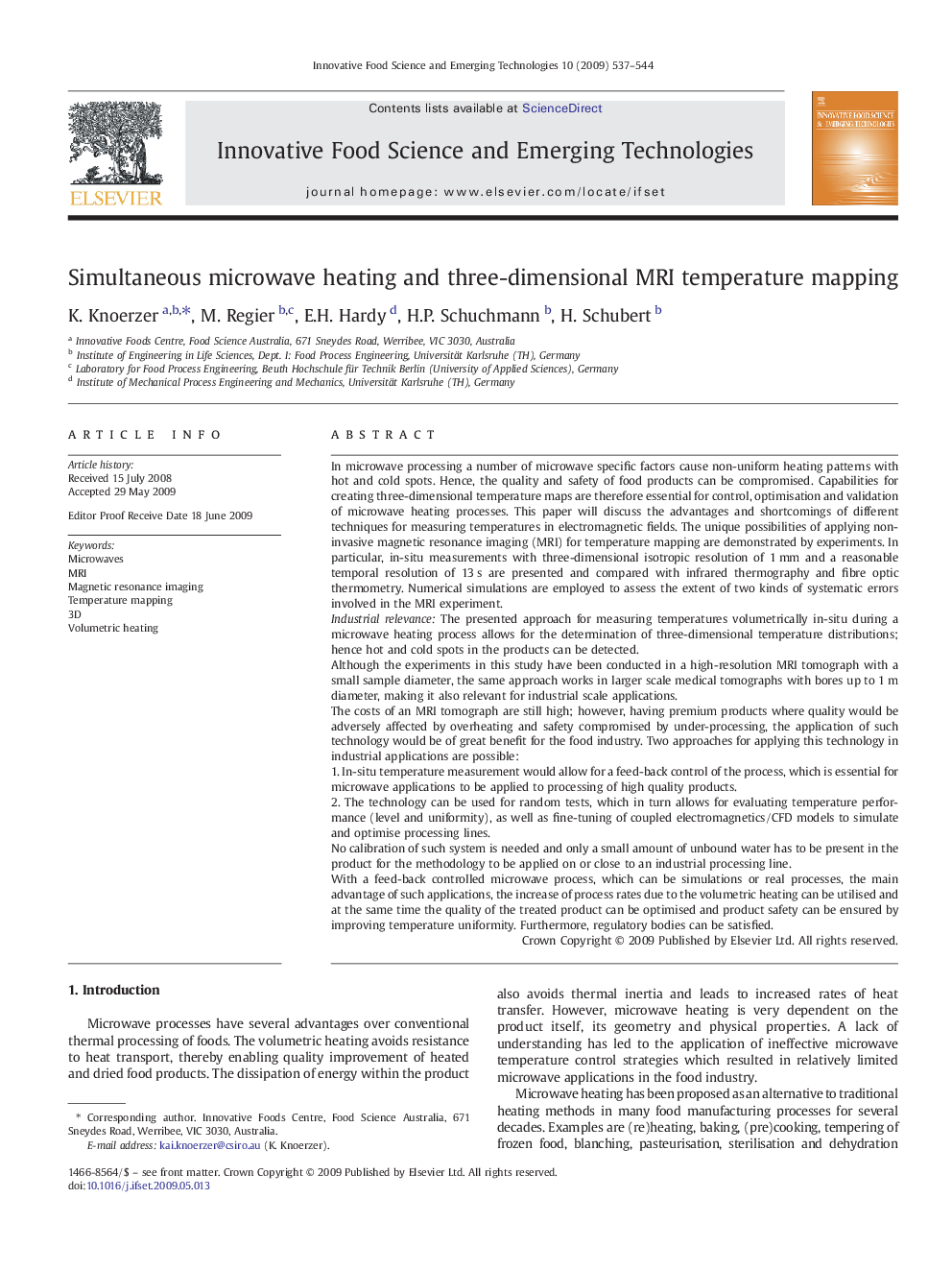| کد مقاله | کد نشریه | سال انتشار | مقاله انگلیسی | نسخه تمام متن |
|---|---|---|---|---|
| 2087068 | 1545554 | 2009 | 8 صفحه PDF | دانلود رایگان |

In microwave processing a number of microwave specific factors cause non-uniform heating patterns with hot and cold spots. Hence, the quality and safety of food products can be compromised. Capabilities for creating three-dimensional temperature maps are therefore essential for control, optimisation and validation of microwave heating processes. This paper will discuss the advantages and shortcomings of different techniques for measuring temperatures in electromagnetic fields. The unique possibilities of applying non-invasive magnetic resonance imaging (MRI) for temperature mapping are demonstrated by experiments. In particular, in-situ measurements with three-dimensional isotropic resolution of 1 mm and a reasonable temporal resolution of 13 s are presented and compared with infrared thermography and fibre optic thermometry. Numerical simulations are employed to assess the extent of two kinds of systematic errors involved in the MRI experiment.Industrial relevanceThe presented approach for measuring temperatures volumetrically in-situ during a microwave heating process allows for the determination of three-dimensional temperature distributions; hence hot and cold spots in the products can be detected.Although the experiments in this study have been conducted in a high-resolution MRI tomograph with a small sample diameter, the same approach works in larger scale medical tomographs with bores up to 1 m diameter, making it also relevant for industrial scale applications.The costs of an MRI tomograph are still high; however, having premium products where quality would be adversely affected by overheating and safety compromised by under-processing, the application of such technology would be of great benefit for the food industry. Two approaches for applying this technology in industrial applications are possible:1. In-situ temperature measurement would allow for a feed-back control of the process, which is essential for microwave applications to be applied to processing of high quality products.2. The technology can be used for random tests, which in turn allows for evaluating temperature performance (level and uniformity), as well as fine-tuning of coupled electromagnetics/CFD models to simulate and optimise processing lines.No calibration of such system is needed and only a small amount of unbound water has to be present in the product for the methodology to be applied on or close to an industrial processing line.With a feed-back controlled microwave process, which can be simulations or real processes, the main advantage of such applications, the increase of process rates due to the volumetric heating can be utilised and at the same time the quality of the treated product can be optimised and product safety can be ensured by improving temperature uniformity. Furthermore, regulatory bodies can be satisfied.
Journal: Innovative Food Science & Emerging Technologies - Volume 10, Issue 4, October 2009, Pages 537–544